Diagram
The following sequence diagram illustrates the Token Auth workflow for authenticating clients with Infisical.Concept
Token Auth is the simplest authentication method that a client can use to authenticate with Infisical. Unlike other authentication methods where a client must exchange credential(s) for a short-lived access token to access the Infisical API, Token Auth allows a client to make authenticated requests to the Infisical API directly using a token. Conceptually, this is similar to using an API Key. To be more specific:- An operator creates an access token in the Infisical UI.
- The operator shares the access token with the client which it can then use to make authenticated requests to the Infisical API.
Guide
In the following steps, we explore how to create and use identities for your workloads and applications to access the Infisical API using the Token Auth authentication method.1
Creating an identity
To create an identity, head to your Organization Settings > Access Control > Identities and press Create identity. When creating an identity, you specify an organization level role for it to assume; you can configure roles in Organization Settings > Access Control > Organization Roles.
When creating an identity, you specify an organization level role for it to assume; you can configure roles in Organization Settings > Access Control > Organization Roles. Now input a few details for your new identity. Here’s some guidance for each field:
Now input a few details for your new identity. Here’s some guidance for each field: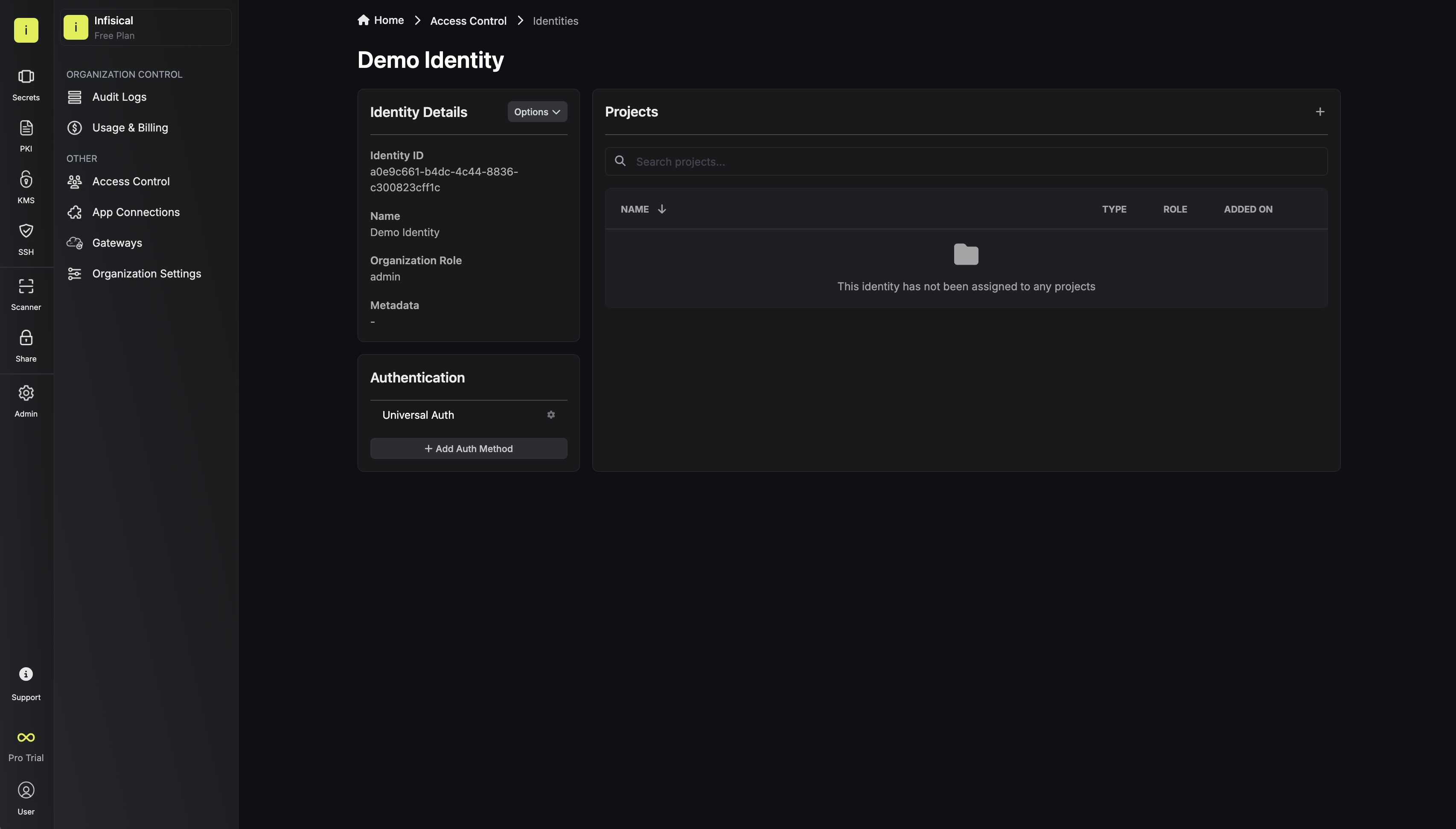 Since the identity has been configured with Universal Auth by default, you should re-configure it to use Token Auth instead. To do this, press to edit the Authentication section,
remove the existing Universal Auth configuration, and add a new Token Auth configuration onto the identity.
Since the identity has been configured with Universal Auth by default, you should re-configure it to use Token Auth instead. To do this, press to edit the Authentication section,
remove the existing Universal Auth configuration, and add a new Token Auth configuration onto the identity.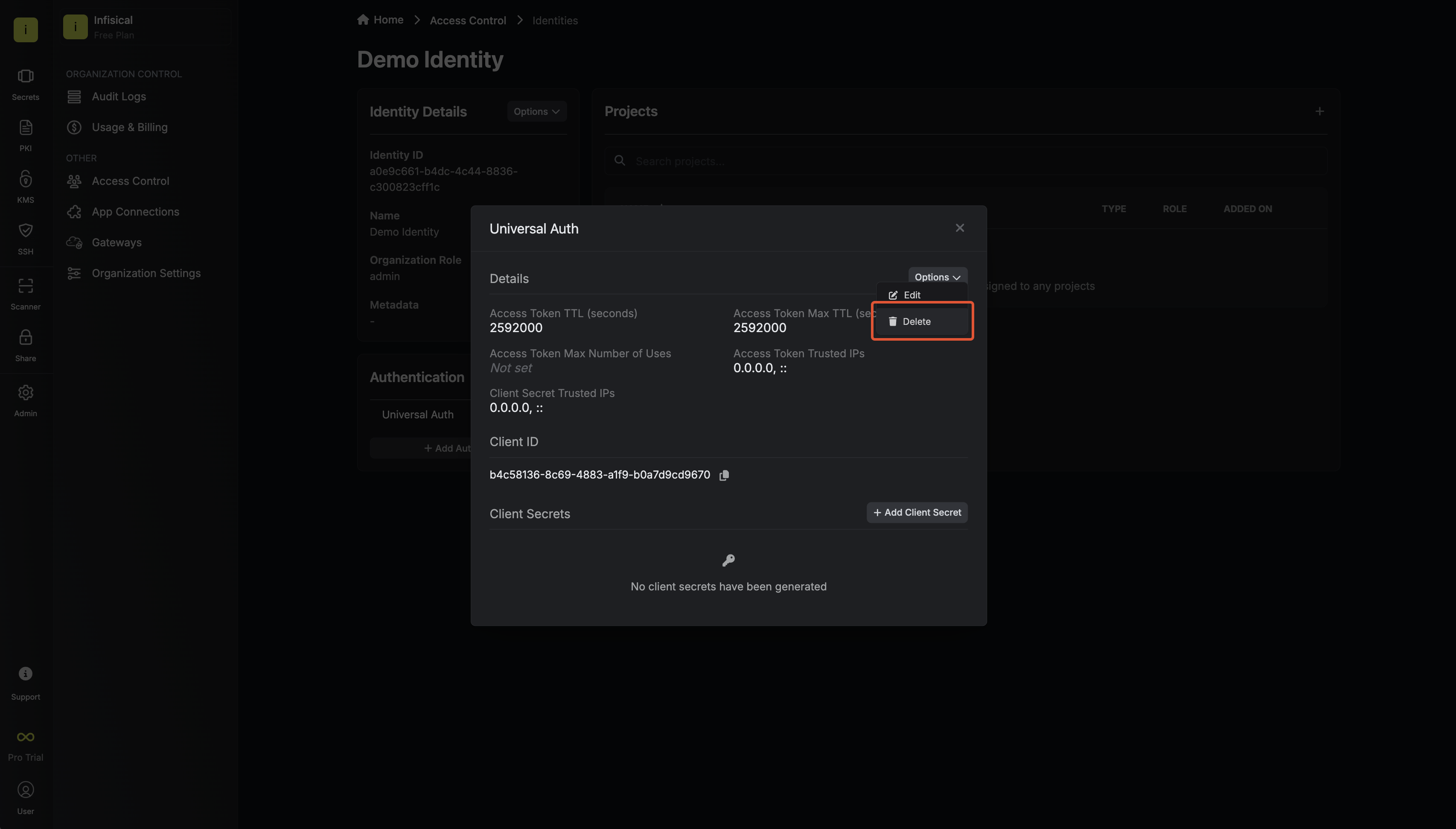
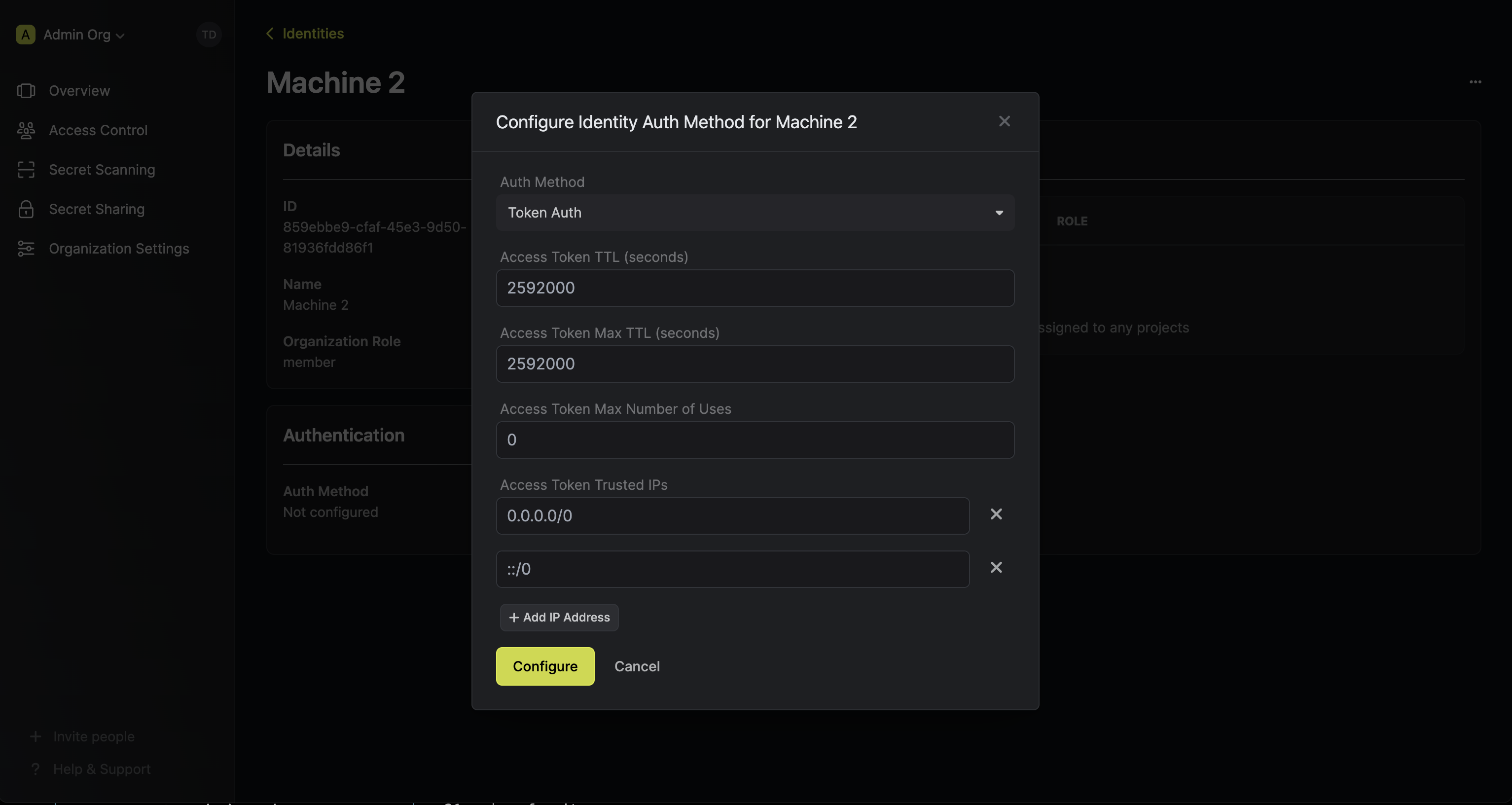 Here’s some more guidance on each field:
Here’s some more guidance on each field:
 When creating an identity, you specify an organization level role for it to assume; you can configure roles in Organization Settings > Access Control > Organization Roles.
When creating an identity, you specify an organization level role for it to assume; you can configure roles in Organization Settings > Access Control > Organization Roles. Now input a few details for your new identity. Here’s some guidance for each field:
Now input a few details for your new identity. Here’s some guidance for each field:- Name (required): A friendly name for the identity.
- Role (required): A role from the Organization Roles tab for the identity to assume. The organization role assigned will determine what organization level resources this identity can have access to.
 Since the identity has been configured with Universal Auth by default, you should re-configure it to use Token Auth instead. To do this, press to edit the Authentication section,
remove the existing Universal Auth configuration, and add a new Token Auth configuration onto the identity.
Since the identity has been configured with Universal Auth by default, you should re-configure it to use Token Auth instead. To do this, press to edit the Authentication section,
remove the existing Universal Auth configuration, and add a new Token Auth configuration onto the identity.
 Here’s some more guidance on each field:
Here’s some more guidance on each field:- Access Token TTL (default is
2592000equivalent to 30 days): The lifetime for an acccess token in seconds. This value will be referenced at renewal time. - Access Token Max TTL (default is
2592000equivalent to 30 days): The maximum lifetime for an acccess token in seconds. This value will be referenced at renewal time. - Access Token Max Number of Uses (default is
0): The maximum number of times that an access token can be used; a value of0implies infinite number of uses. - Access Token Trusted IPs: The IPs or CIDR ranges that access tokens can be used from. By default, each token is given the
0.0.0.0/0, allowing usage from any network address.
2
Creating a Token
In order to use the identity with Token Auth, you’ll need to create an (access) token; you can think of this token akin
to an API Key used to authenticate with the Infisical API. With that, press Create Token.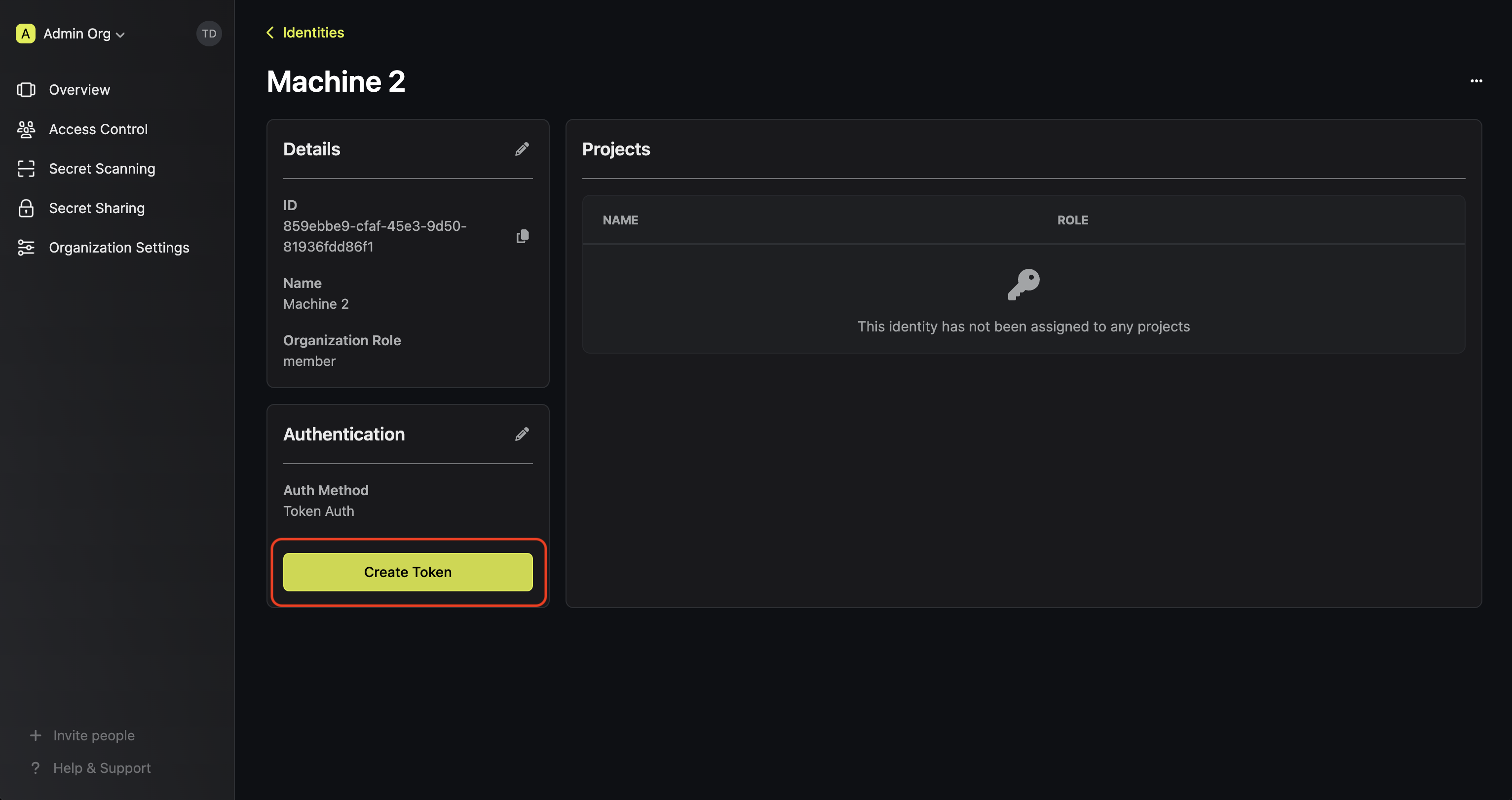
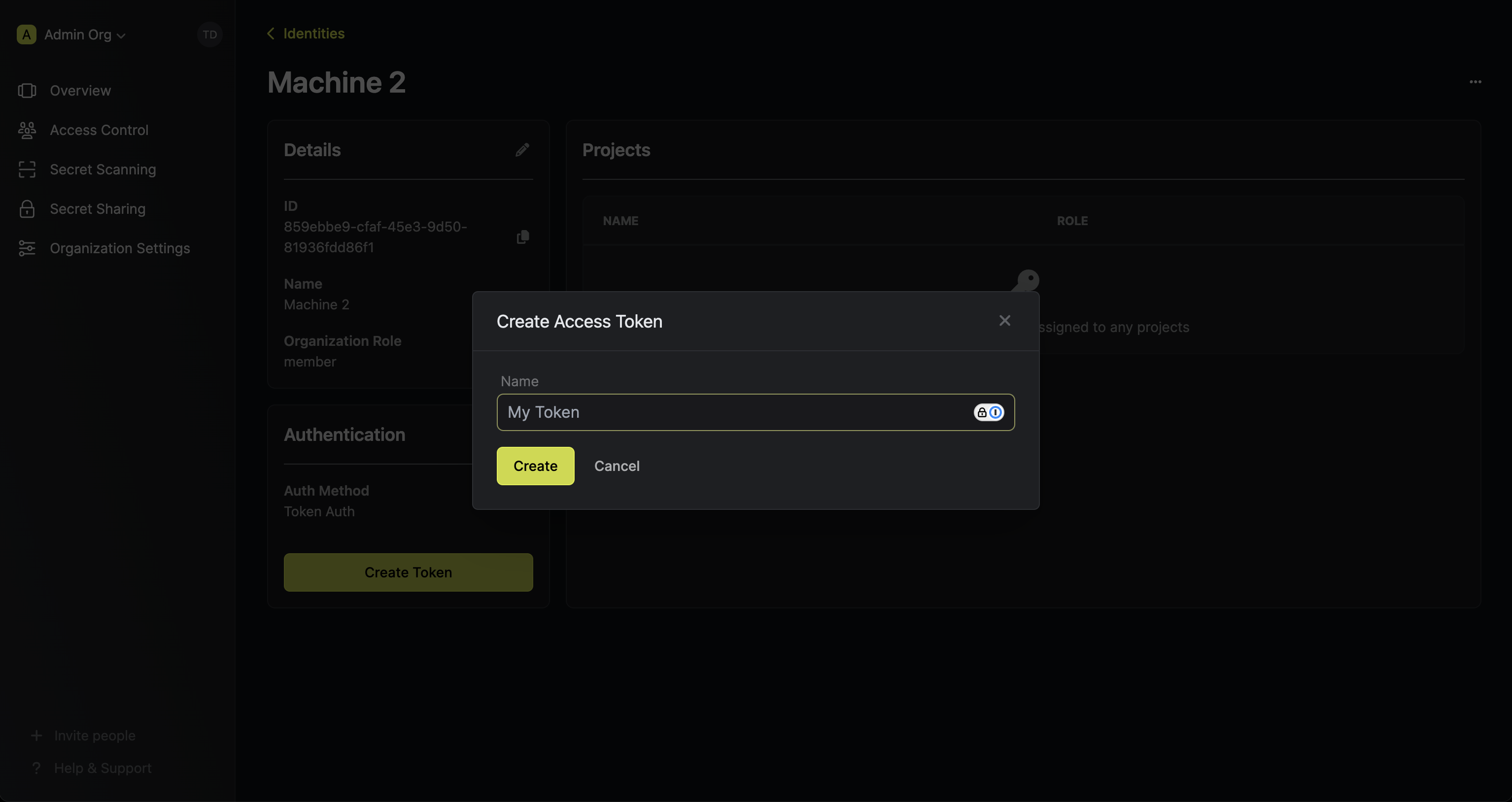
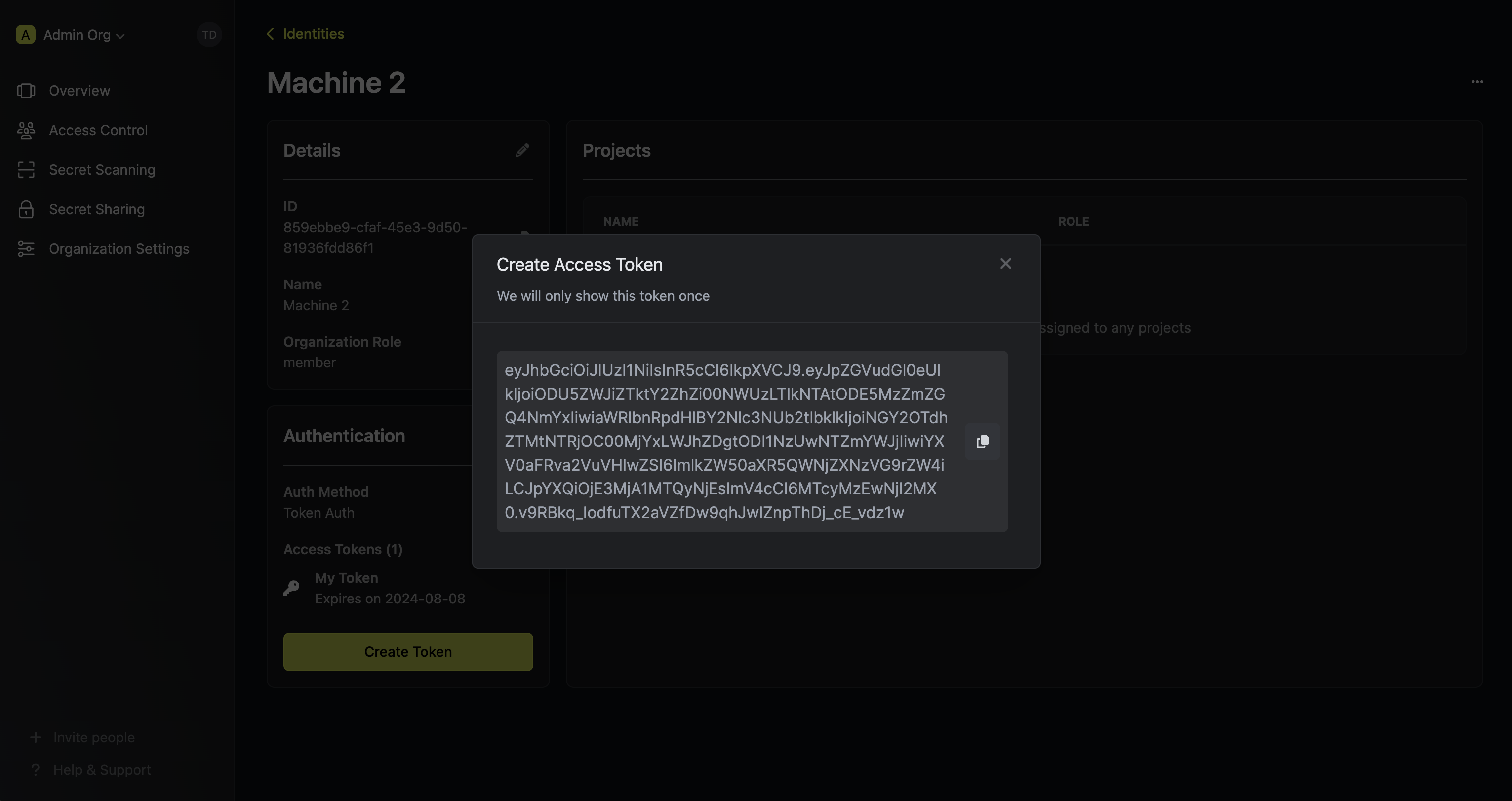 Copy the token and keep it handy as you’ll need it to authenticate with the Infisical API.
Copy the token and keep it handy as you’ll need it to authenticate with the Infisical API.


 Copy the token and keep it handy as you’ll need it to authenticate with the Infisical API.
Copy the token and keep it handy as you’ll need it to authenticate with the Infisical API.3
Adding an identity to a project
To enable the identity to access project-level resources such as secrets within a specific project, you should add it to that project.To do this, head over to the project you want to add the identity to and go to Project Settings > Access Control > Machine Identities and press Add identity.Next, select the identity you want to add to the project and the project level role you want to allow it to assume. The project role assigned will determine what project level resources this identity can have access to.



4
Accessing the Infisical API with the identity
To access the Infisical API as the identity, you can use the generated access token from step 2
to authenticate with the Infisical API.
Each identity access token has a time-to-live (TTL) which you can infer from the response of the login operation;
the default TTL is
7200 seconds which can be adjusted in the Token Auth configuration.If an identity access token expires, it can no longer authenticate with the Infisical API. In this case,
a new access token should be obtained.Why is the Infisical API rejecting my access token?
Why is the Infisical API rejecting my access token?
There are a few reasons for why this might happen:
- The access token has expired. If this is the case, you should obtain a new access token or consider extending the token’s TTL.
- The identity is insufficiently permissioned to interact with the resources you wish to access.
- The access token is being used from an untrusted IP.
What is access token renewal and TTL/Max TTL?
What is access token renewal and TTL/Max TTL?
A identity access token can have a time-to-live (TTL) or incremental lifetime after which it expires.In certain cases, you may want to extend the lifespan of an access token; to do so, you must set a max TTL parameter.A token can be renewed any number of times where each call to renew it can extend the token’s lifetime by increments of the access token’s TTL.
Regardless of how frequently an access token is renewed, its lifespan remains bound to the maximum TTL determined at its creation.

